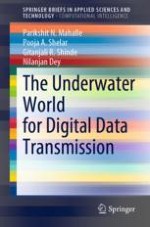This book covers all small details about Underwater Sensor Networks (UWSN). Researchers can use this book as a prerequisite before starting any research on underwater networks or underwater applications. This book covers the introduction, challenges, different architectural models for UWSN, various attacks on UWSN, underwater applications, and networking layers. The target audience includes professors and students in engineering, and researchers and engineers working on marine applications. In academic level, the book is helpful for students having Networking and Information Security as elective subject and doing projects in Wireless Networks. It is also helpful for spostgraduates and Ph.D. researchers to learn basics of Underwater Sensor Networks.
